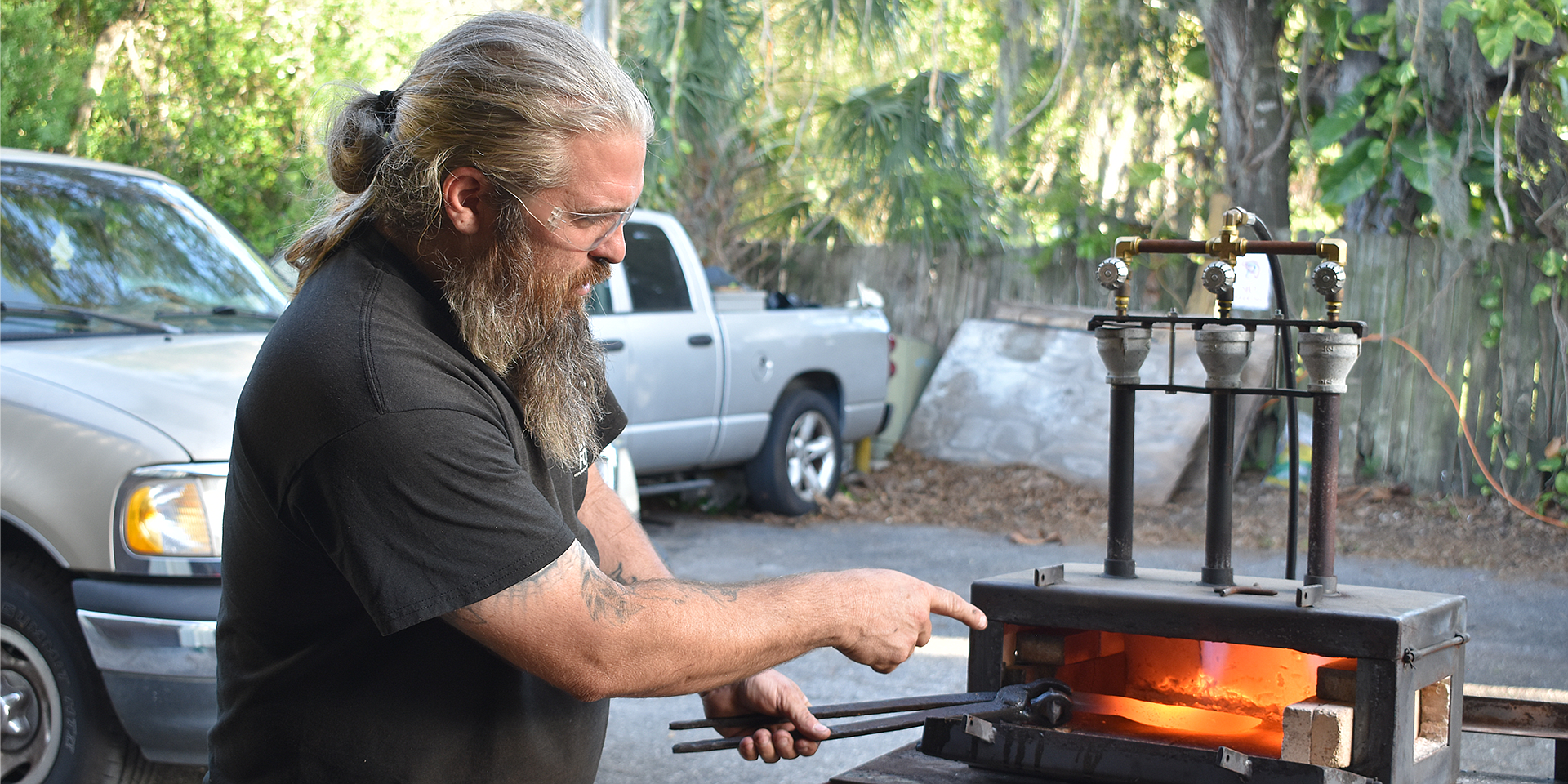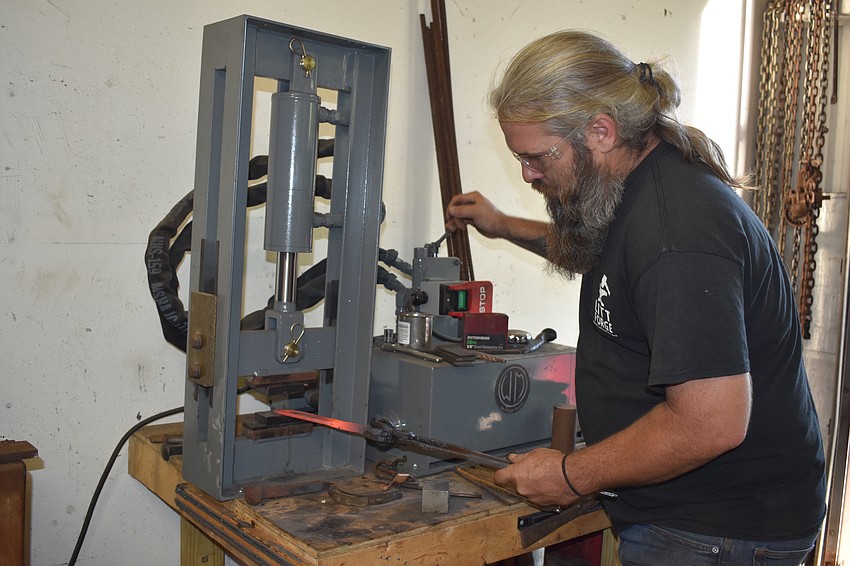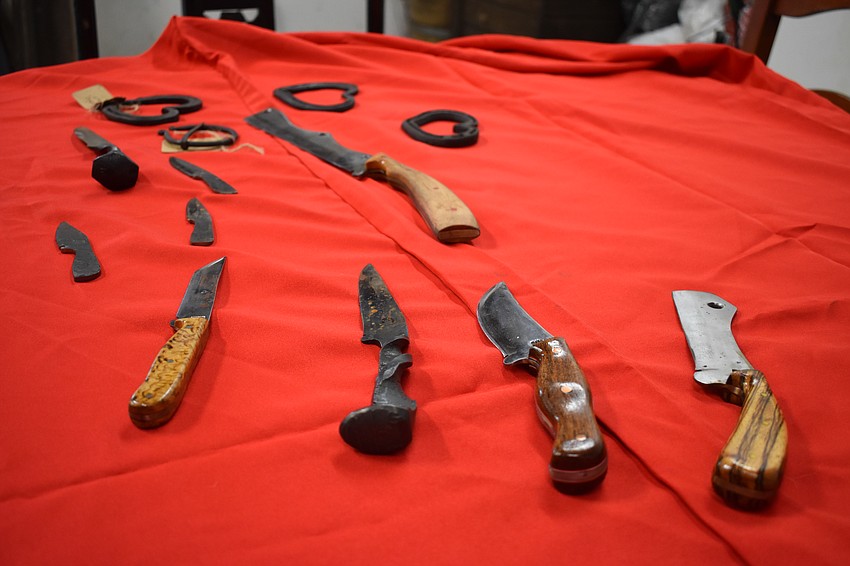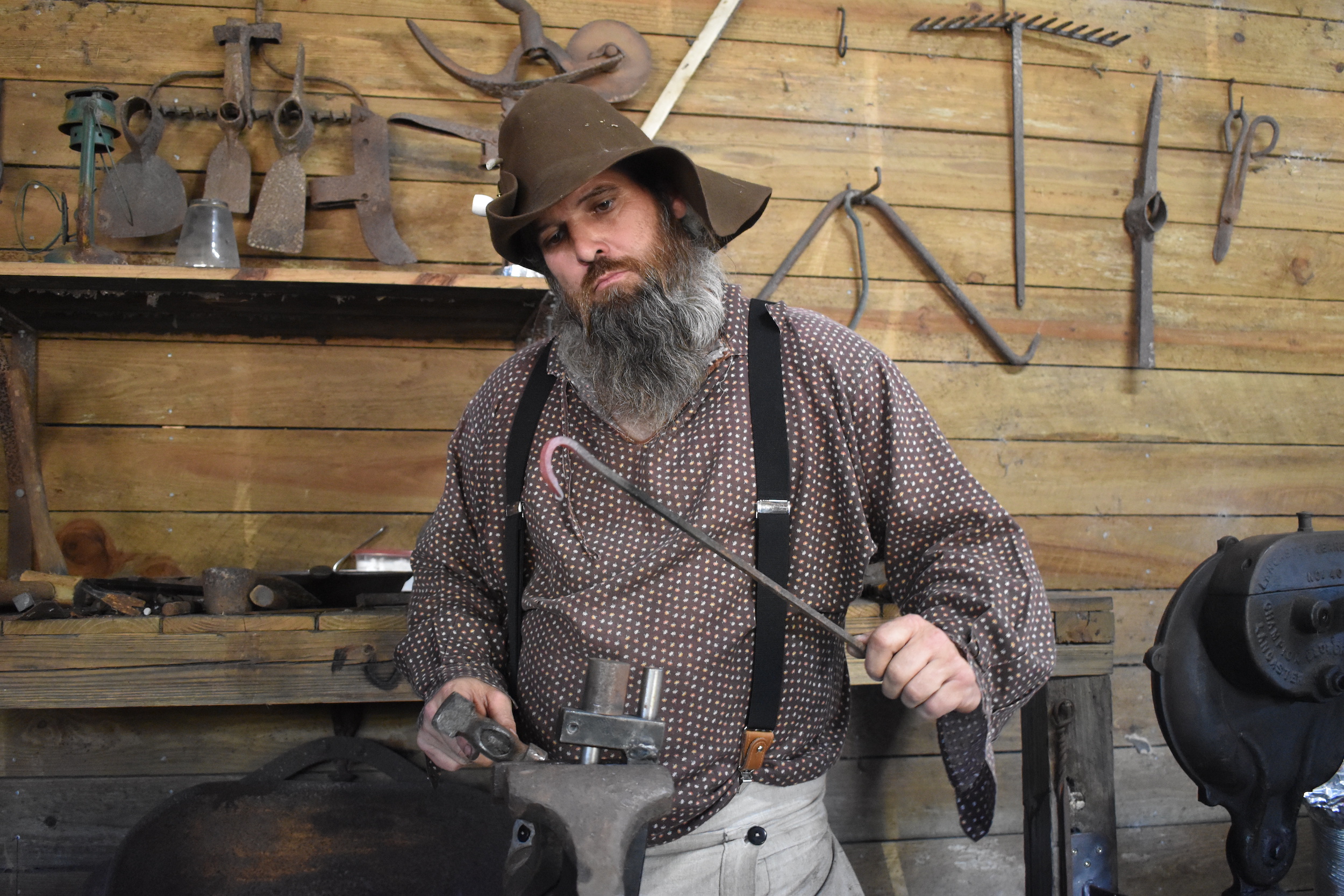- November 21, 2024
-
-
Loading

Loading

To many, blacksmithing may be the stuff of history, but Thomas Littrell, owner of Litt Forge, thinks its story is still being written.
"It's going to last the ages. It's too interesting. There’s something really cool about molding hot metal into something else with a hammer,” he said.
Littrell said he sees many young people who are interested in the craft.
Meanwhile, he said every time he lights up the forge, it's as though it's the first time; he can't wait to see what will become of the piece of metal he brings forth, which may be a railroad spike before being transformed into a pocketknife.
Sometimes, instead of following his plans, the metal does what it wants to do, so he might have to change course halfway through and go with a different style.

Littrell started in the craft eight years ago with only his enthusiasm and a makeshift forge created from a propane grill, some sheet metal, some refractory cement, coal he had bought online and a hairdryer for air conduction.
One of the first projects he ever made was a rose for his mother Vonni Littrell, but he was not able to give it to her before she died of cancer in 2017, and he now keeps it beside her picture on his wall.
When he watched her take her last breath, he realized he wanted to make the most of his life, delving even further into what he was passionate about.
"I realized I truly wanted to live my life, and be me, and find out who I was, and what my life meant to me, because it was very clear to me that day, that life goes by very fast,” he said.

After that point, he emailed the person who had inspired his blacksmithing: Daniel Casey of the History Channel series "Iron & Fire," and traveled to Romance, Arkansas, to take a three-day bladesmithing class with him.
“The way that he appears on that show, very calm and kind, is exactly the way he is. He was not acting,” he said.
When he returned home, he continued to practice what he'd learned, making 100 knives over the course of about two weeks.
“Every day I came home and made knife after knife after knife, because I wanted to beat those instructions that I had learned that week into my head,” he said.

Fortunately, Littrell said, blacksmithing is very forgiving. If you’re trying to bend metal at a 90-degree angle, for instance, you must bend it farther than that initially.
That doesn’t mean that failures aren’t part of the experience, though. Sometimes he has put hours of work into a project, only to melt it when returning it to the furnace.
“It's become a hobby that rewards me in many ways," he said. "It humbles you. When you work all day on something and it's ruined — you can ruin it after eight hours of working on something — it's very humbling.”

As Littrell works to carry on the craft, he notes that his method differs from Casey’s. For instance, Casey uses an old candle torch, but Littrell uses a propane torch.
“He’s a traditionalist, I’m not. I’m a semi-traditionalist but a modern bladesmith,” he said.
Yet he still looks to the past. Although he buys plenty of new steel, he is always in search of older steel, something he says is a superior product for blacksmithing.
Newer alloys, he said, are designed to be cut, not to withstand heat. Although they can withstand normal fire damage, the blacksmith's forge will change their molecular structure.
Once items are completed, there's still a market for them today.
One example is the Sarasota Medieval Fair, though Casey also sells some merchandise online. He has been a member of the fair since 2018, when he ventured into acting and had the chance to portray various characters including Sir William Wallace.

He also performs as a blacksmith at the fair, and at the Venezia Renaissance Faire and the Myakka River Rendezvous at Crowley Nature Center.
When he’s not sharing his craft at the fairs, you’ll often find him teaching. He tends to keep classes small, with a maximum of two to three participants.
"Whether they want to do it or don't want to do it, I love to share and give back,” he said. “I really think that’s what we’re here for, is to share our knowledge with the next generation.”